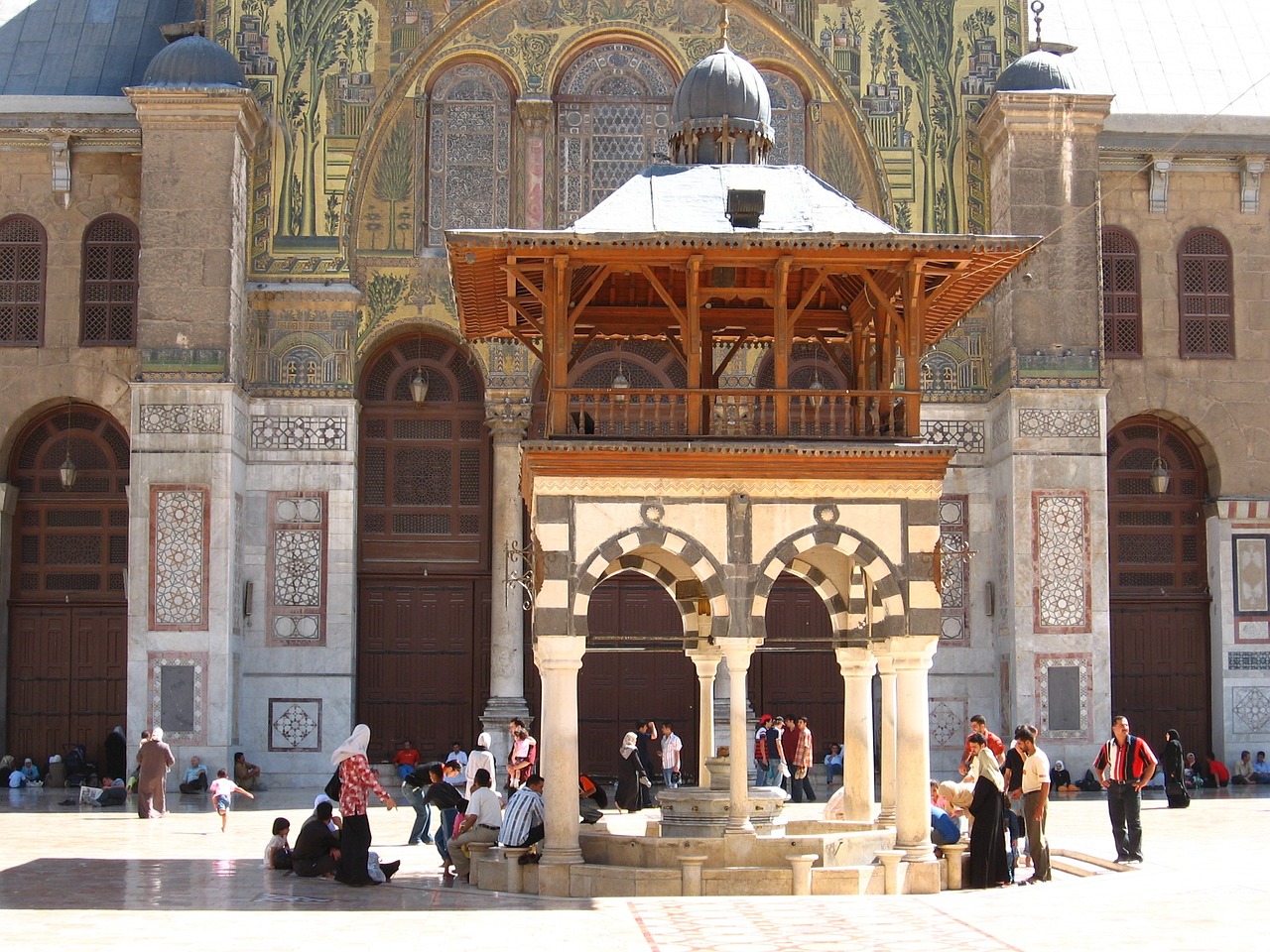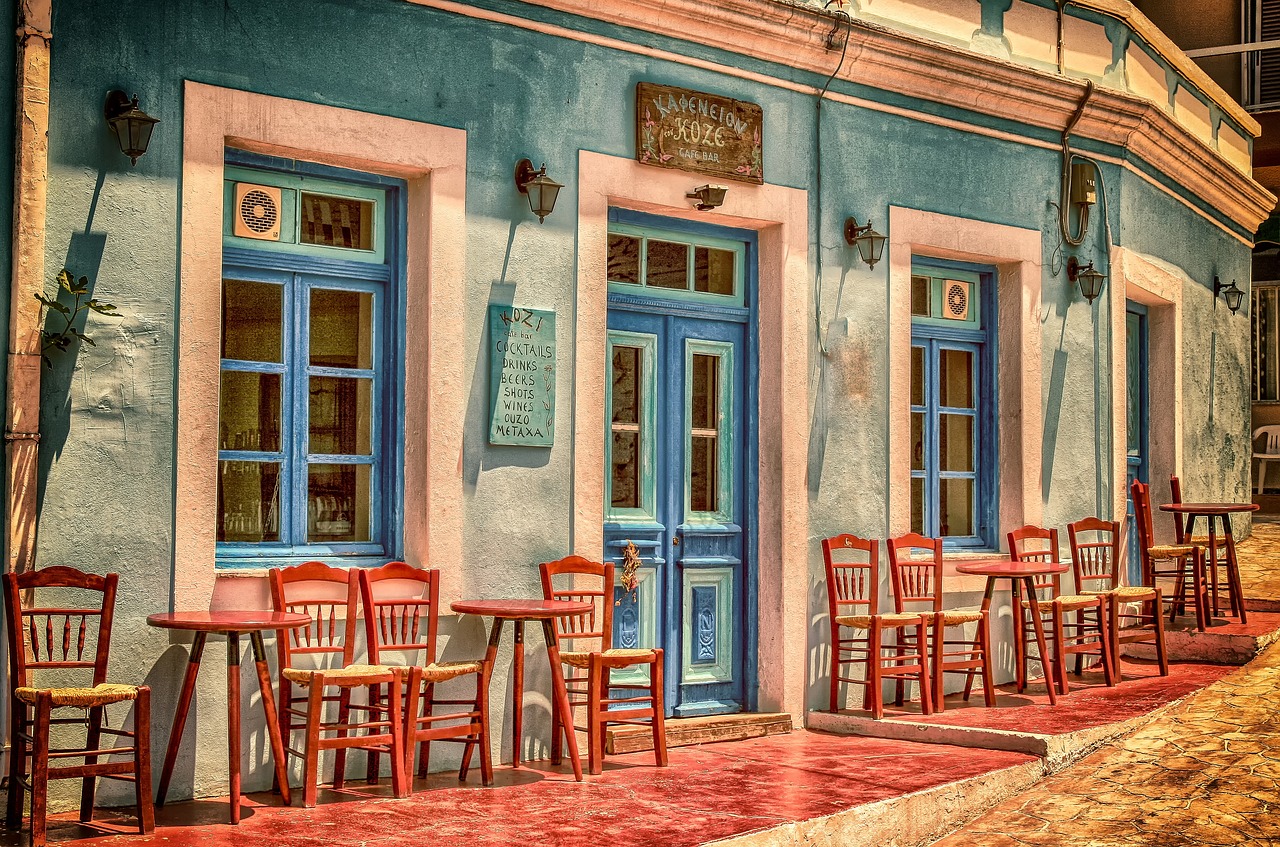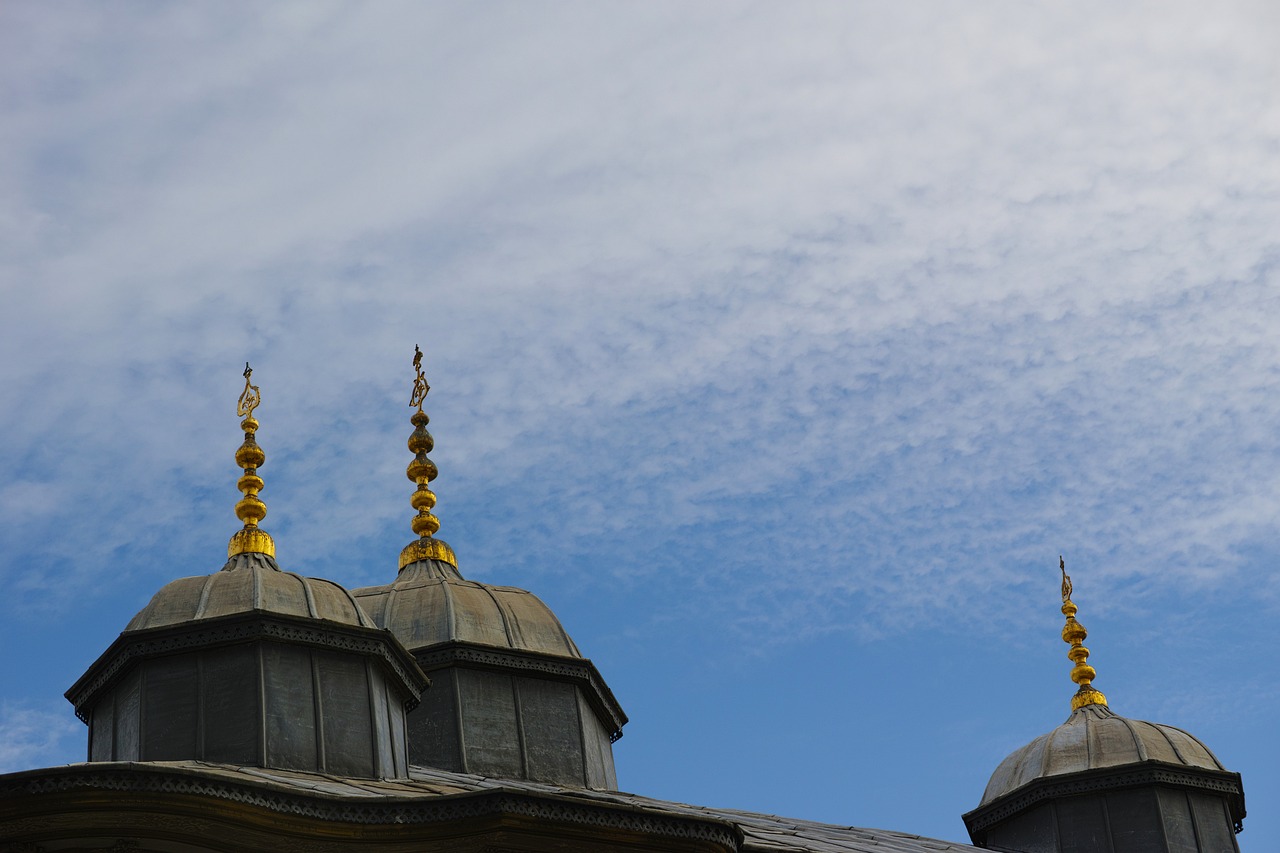Introduction
Aleppo, a city steeped in history, has played a pivotal role in the development and enrichment of Islamic art and architecture. For centuries, this vibrant center of culture and trade has been a melting pot of artistic influences, leaving an indelible mark on the world of Islamic aesthetics. In this article, we delve into the profound influence of Aleppo on Islamic art and architecture, tracing its legacy through the ages.
Aleppo, a city whose very foundations echo with the whispers of history, has been a beacon of influence in the realm of Islamic art and architecture. Its enduring presence at the crossroads of culture and commerce has nurtured an artistic legacy that has resonated across the Islamic world for centuries. In our exploration, we embark on a journey that unveils the profound impact of Aleppo on the evolution of Islamic art and architecture, tracing its intricate and enduring legacy through the annals of time.
A Confluence of Cultures: Aleppo’s position as a thriving hub of trade and cultural exchange has been the catalyst for the intermingling of diverse artistic traditions. Here, Islamic, Byzantine, Persian, and Arab influences converged, giving birth to a unique aesthetic that transcended borders. The city’s artisans and craftsmen, through their meticulous work, blended these influences to create a distinctive Aleppo style.
Majestic Mosques: Aleppo’s mosques are not just places of worship; they are living testaments to the city’s artistic prowess. The Umayyad Mosque, with its towering minaret, is an iconic example of architectural ingenuity. The Great Mosque’s serene courtyards and intricate tile work are a testament to the city’s devotion to both faith and aesthetics. These mosques have not only served as centers of worship but also as repositories of artistic excellence.
Caravanserais and Souks: Aleppo’s architectural splendors extend beyond religious structures. The city’s caravanserais, such as Khan al-Wazir and Khan al-Jumruk, are architectural marvels in their own right. These bustling inns not only provided shelter for travelers but also bore witness to the exchange of goods, ideas, and stories. The souks, with their vaulted ceilings and labyrinthine alleyways, beckoned merchants and shoppers alike, creating an atmosphere that transcended commerce to become a cultural experience.
Preservation and Resilience: Despite the challenges of time and recent conflicts, Aleppo’s commitment to preserving its artistic heritage remains unwavering. Restoration efforts are breathing new life into ancient structures, allowing them to continue telling the story of Aleppo’s artistic journey. These endeavors are a testament to the city’s enduring resilience and determination to protect its cultural treasures.
Aleppo’s impact on Islamic art and architecture is not confined to its ancient walls; it reverberates across the Islamic world. Its legacy is an invitation to explore the interplay of cultures, the fusion of traditions, and the enduring beauty that has emerged from this vibrant city. As we trace Aleppo’s artistic journey, we are reminded that art and architecture have the power to transcend time and adversity, serving as a bridge that connects us to the past and inspires us for the future.
For additional details, consider exploring the related content available here Islamic Art and Culture: a resource for teachers
A Masterpiece of Islamic Architecture
One of Aleppo’s crowning jewels is the Umayyad Mosque, an architectural marvel that dates back to the 8th century. Its intricate geometric designs, graceful minarets, and stunning courtyard have left an enduring impact on Islamic architecture. The mosque’s elegant blend of Byzantine and Islamic architectural elements reflects Aleppo’s role as a cultural crossroads.
The Umayyad Mosque in Aleppo stands as an illustrious masterpiece of Islamic architecture, a timeless gem that transcends centuries. Its history reaches back to the 8th century, bearing witness to the passage of time and the evolution of art and culture.
What makes the Umayyad Mosque truly exceptional are the intricate details that adorn its structure. Geometric designs, meticulously carved into stone, create an awe-inspiring visual tapestry that leaves visitors in perpetual wonder. Each intricacy serves as a testament to the craftsmanship of the artisans who labored to bring this architectural marvel to life.
The graceful minarets that reach towards the heavens are a defining feature of the mosque. Their elegant spirals and calligraphy-rich surfaces not only guide the faithful to prayer but also stand as symbols of spiritual ascent. They are architectural marvels in their own right, inspiring a sense of reverence and tranquility.
The mosque’s courtyard, a verdant oasis within the bustling city, offers a sanctuary for reflection and prayer. Its tranquil atmosphere and pristine fountains provide a respite from the hustle and bustle of daily life, inviting visitors to connect with their inner selves and the divine.
What sets the Umayyad Mosque apart is its ability to seamlessly blend Byzantine and Islamic architectural elements. This harmonious fusion reflects Aleppo’s historical role as a cultural crossroads—a place where different traditions, beliefs, and artistic influences converged. The mosque stands as a living testament to the spirit of coexistence and cultural exchange that has long defined this vibrant city.
As we stand in the shadow of the Umayyad Mosque, we are transported to a bygone era, where artistry and spirituality converged to create something truly extraordinary. It serves as a timeless reminder of the enduring legacy of Aleppo and its contributions to the world of Islamic architecture. Today, as we marvel at its beauty, we are not merely witnesses to history but participants in a legacy that continues to inspire and captivate hearts and minds across the ages.
If you’d like to dive deeper into this subject, there’s more to discover on this page: Courtly Splendor in the Islamic World

Aleppo’s historical significance during the Seljuk era is evident in its architectural treasures. Seljuk architecture, known for its intricate brickwork and soaring minarets, flourished in Aleppo. This architectural style later spread across the Islamic world, influencing mosque designs from Anatolia to Persia.
“Aleppo’s historical resonance during the Seljuk era resounds through the ages, etching its significance into the city’s architectural fabric. This was a time when Seljuk architecture, characterized by its mesmerizing intricate brickwork and elegant minarets that pierced the sky, blossomed in Aleppo. The city became a crucible where artistic ingenuity and cultural convergence forged architectural marvels.
The hallmark of Seljuk architecture, the mesmerizing brickwork, is a testament to the skill and craftsmanship of Aleppo’s artisans. Each brick, carefully molded and placed, weaves a tale of precision and creativity. The walls of Aleppo’s Seljuk structures bear witness to the mastery of brick, forming patterns that are both geometrically precise and aesthetically captivating.
The minarets that grace Aleppo’s skyline are not just architectural elements; they are towering symbols of spiritual devotion. Rising gracefully above the city, these minarets bear the imprint of Seljuk design, featuring intricate decorations and calligraphy that speak to the faith and artistry of the era. They are more than mere landmarks; they are beacons of culture and religion.
The influence of Seljuk architecture extends far beyond Aleppo’s boundaries. The architectural style that flourished here became a source of inspiration that radiated across the Islamic world. From Anatolia to Persia, Seljuk mosque designs bore the echoes of Aleppo’s architectural ingenuity. The soaring minarets, the delicate brickwork, and the harmonious fusion of form and function all became hallmarks of mosque construction influenced by Aleppo’s Seljuk legacy.
In essence, Aleppo’s Seljuk-era architectural treasures are not confined to the pages of history; they are a living testament to the enduring impact of cultural exchange and artistic innovation. They invite us to traverse the corridors of time, to admire the intricate brickwork, and to contemplate the profound influence of a city that once stood as a crucible of artistic excellence.”
Looking for more insights? You’ll find them right here in our extended coverage: Islamic Art and Culture: a resource for teachers

The Mausoleum of Imam Yahya, built in the 12th century, showcases Aleppo’s distinctive approach to Islamic art. Its exquisite stucco ornamentation, characterized by intricate geometric patterns and calligraphy, exemplifies the city’s contribution to Islamic decorative arts.
The Mausoleum of Imam Yahya, a sublime architectural gem crafted in the 12th century, stands as a radiant testament to Aleppo’s unique interpretation of Islamic art. Within its hallowed walls, Aleppo’s distinctive approach to ornamentation and aesthetics unfolds, offering a profound insight into the city’s contribution to the world of Islamic decorative arts.
Stucco Masterpieces: The defining feature of the mausoleum is its exquisite stucco ornamentation, a technique that Aleppo craftsmen elevated to unparalleled heights. The stucco work is a testament to the skill and artistry of the city’s artisans, who transformed humble materials into intricate masterpieces. The delicate patterns, meticulously carved into the stucco, create an otherworldly ambiance, inviting contemplation and reverence.
Geometric Poetry: Aleppo’s stucco ornamentation is a symphony of geometry, where shapes and patterns converge in a mesmerizing dance. Intricate interlocking designs, from star-shaped motifs to complex arabesques, adorn the mausoleum’s walls, ceiling, and mihrab. This geometric poetry not only serves as a visual delight but also conveys deeper symbolic meanings, reflecting the mathematical precision and cosmic order intrinsic to Islamic art.
Calligraphic Elegance: Calligraphy, another hallmark of Islamic art, finds eloquent expression within the mausoleum’s sacred space. Inscriptions of Quranic verses and poetic praises to Imam Yahya are elegantly woven into the stucco designs. The graceful curves and flowing lines of Arabic script become a visual and spiritual conduit, evoking a sense of profound devotion and wisdom.
Timeless Beauty: The Mausoleum of Imam Yahya is a timeless marvel that transcends the centuries. Its stucco ornamentation, a fusion of artistic innovation and spiritual contemplation, continues to inspire awe and admiration. The delicate beauty of Aleppo’s decorative arts serves as a testament to the enduring legacy of the city’s artisans, who infused their creations with a sense of spirituality and cultural identity.
As Aleppo cherishes and preserves its architectural treasures, the Mausoleum of Imam Yahya stands as a beacon of artistic excellence and cultural heritage. It beckons visitors to step into a world where art becomes a bridge to the divine, where geometric patterns and calligraphic elegance intertwine to create a sensory experience that transcends time and place. In this sacred space, Aleppo’s contribution to Islamic decorative arts resonates as a testament to the enduring beauty of human creativity and devotion.
Should you desire more in-depth information, it’s available for your perusal on this page: The Muqarnas Dome: Its Origin and Meaning

The madrasas (Islamic schools) of Aleppo are not only centers of knowledge but also architectural gems. Their courtyards adorned with lush gardens, intricate tile work, and peaceful fountains exemplify the harmonious integration of aesthetics and education in Islamic architecture.
The madrasas (Islamic schools) of Aleppo are truly remarkable, serving as both bastions of knowledge and exquisite examples of architectural mastery. Beyond their role as centers of education, these institutions are adorned with architectural details that elevate them to the status of cultural treasures.
One cannot help but be captivated by the serene beauty that envelopes the courtyards of Aleppo’s madrasas. These courtyards are more than just open spaces; they are tranquil oases where the pursuit of knowledge intertwines seamlessly with the appreciation of aesthetics. Lush gardens, meticulously cultivated over centuries, create a verdant backdrop that soothes the soul and inspires contemplation.
Intricate tile work, a hallmark of Islamic artistry, adorns the walls and facades of these madrasas. These ornate patterns, often featuring geometric designs and calligraphy, are not merely decorative; they symbolize the union of mathematical precision and artistic expression. They serve as a testament to the Islamic world’s dedication to beauty in all aspects of life.
Peaceful fountains, their waters shimmering in the dappled sunlight, provide a sensory symphony of sound and motion. They offer respite from the bustling world outside, inviting students and scholars to pause and reflect amidst the harmonious sounds of nature.
The madrasas of Aleppo exemplify the harmonious integration of aesthetics and education in Islamic architecture. They are spaces where the pursuit of knowledge is not divorced from the appreciation of beauty but rather celebrated as two facets of the same intellectual and spiritual journey. These architectural gems stand as living testaments to Aleppo’s enduring commitment to the enrichment of both the mind and the senses, offering a glimpse into a world where aesthetics and education dance in perfect harmony.
Looking for more insights? You’ll find them right here in our extended coverage: Timbuktu – UNESCO World Heritage Centre

Aleppo’s influence extended to the Ottoman Empire, as seen in the city’s grand bazaars and caravanserais. The Ottoman architectural style, marked by domes, arches, and elaborate tile work, bore the traces of Aleppo’s architectural legacy.
Aleppo’s influence was not confined to its own city limits; it extended its architectural sway to the mighty Ottoman Empire, leaving an indelible mark on the empire’s architectural identity. This profound influence is most evident in Aleppo’s grand bazaars and caravanserais, where the Ottoman architectural style incorporated elements that bore the unmistakable traces of Aleppo’s architectural legacy. Let’s delve deeper into this captivating fusion of styles:
Ottoman Grandeur in Bazaars: Aleppo’s bustling bazaars, with their labyrinthine alleys and vibrant marketplaces, served as hubs of commerce and culture. Ottoman architects drew inspiration from these thriving centers when designing their own grand bazaars. The result was a harmonious blend of architectural brilliance, where the functional design of Aleppo’s bazaars influenced the layout and ambiance of Ottoman marketplaces.
Caravanserais as Icons: Aleppo’s caravanserais, such as the Khan As’ad Pasha, stood as architectural icons that captured the imagination of travelers. Ottoman architects, recognizing the practicality and elegance of these structures, incorporated similar design elements into their own caravanserais across the empire. The majestic domes, arched entrances, and ornate courtyards became hallmarks of Ottoman caravanserais.
Domes and Arches: Aleppo’s architectural heritage, characterized by domes and arches, found a prominent place in Ottoman architectural vocabulary. The use of grand domes in mosques, like the Umayyad Mosque in Aleppo, influenced the construction of Ottoman mosques. The arches that graced Aleppo’s buildings also made their way into Ottoman architecture, becoming a defining feature of many Ottoman structures.
Elaborate Tile Work: Aleppo’s tradition of intricate tile work, often seen in the decoration of mosques and palaces, played a pivotal role in shaping Ottoman decorative art. The Ottomans adopted and expanded upon this art form, adorning their own mosques, palaces, and public buildings with mesmerizing tile designs that mirrored Aleppo’s artistic sophistication.
Cultural Cross-Pollination: The cross-pollination of architectural styles was not a one-way street. While Aleppo’s influence left an indelible mark on Ottoman architecture, the Ottomans, in turn, contributed to Aleppo’s architectural evolution. This dynamic exchange enriched both cultures, fostering a creative synergy that manifested in the city’s built environment.
A Testament to Heritage: Today, Aleppo’s architectural legacy, with its Ottoman echoes, serves as a testament to the city’s rich heritage and its role in shaping the broader architectural landscape of the Ottoman Empire. These architectural marvels continue to inspire and captivate visitors, offering a glimpse into a shared history of innovation and artistic expression.
In summary, Aleppo’s influence on the Ottoman Empire’s architectural style is a fascinating chapter in the annals of architectural history. The exchange of ideas, designs, and techniques between Aleppo and the Ottomans resulted in a harmonious fusion of architectural brilliance that still graces both the city’s streets and the sprawling Ottoman Empire’s landscapes. This architectural legacy serves as a bridge between two great civilizations, reminding us of the enduring power of cultural exchange and artistic collaboration.
To delve further into this matter, we encourage you to check out the additional resources provided here: The Story of Allepo City. | by Muhammad Ali | Jul, 2023 | Medium

Despite challenges posed by conflicts, Aleppo remains committed to preserving its architectural heritage. Ongoing restoration projects aim to breathe new life into the city’s historic structures, ensuring that their beauty and cultural significance endure.
Aleppo’s commitment to preserving its architectural heritage shines as a beacon of resilience. Even in the face of conflicts and the trials of time, the city stands unwavering in its dedication to safeguarding its rich legacy.
These ongoing restoration projects are a testament to Aleppo’s indomitable spirit. With unwavering determination, skilled artisans and conservationists labor tirelessly to restore the city’s historic structures to their former glory. It’s not just about rebuilding; it’s about breathing new life into these architectural marvels.
Each restoration effort is a journey through time, a meticulous process that demands not only technical expertise but a profound understanding of Aleppo’s history and culture. These projects are infused with a deep sense of responsibility to maintain the authenticity and integrity of the past.
Restorations are not limited to the physical aspects alone; they also serve to rejuvenate Aleppo’s soul. As the ancient structures regain their luster, they once again become vibrant hubs where communities converge, where traditions are celebrated, and where stories are shared. They are not just architectural wonders; they are living witnesses to Aleppo’s enduring legacy.
Furthermore, these restoration projects have an intrinsic connection to the city’s identity and pride. Aleppo’s architectural heritage is not just a collection of buildings; it’s a reflection of the city’s history, character, and the resilience of its people. It embodies the essence of Aleppo, serving as a symbol of hope and continuity.
In a world where the pace of change can be overwhelming, Aleppo’s commitment to preserving its architectural heritage offers a poignant lesson. It reminds us that amidst the chaos of the present, the echoes of the past can guide us toward a more sustainable and culturally rich future.
As these ongoing restoration projects continue to breathe new life into Aleppo’s historic structures, they ensure that the city’s architectural treasures will remain as vibrant and relevant as ever. The legacy of Aleppo’s resilience and cultural significance endures, an enduring testament to the city’s unwavering dedication to preserving its history for generations to come.
Don’t stop here; you can continue your exploration by following this link for more details: The Topkapi Scroll—Geometry and Ornament in Islamic Architecture

Conclusion
Aleppo’s profound influence on Islamic art and architecture is a testament to its enduring legacy as a cultural crossroads. From the Umayyad Mosque’s grandeur to the intricate stucco ornamentation of the Mausoleum of Imam Yahya, Aleppo has left an indelible mark on the world of Islamic aesthetics. Its architectural legacy serves as a reminder of the city’s role in fostering artistic exchange and cultural enrichment. In the face of challenges, Aleppo’s commitment to preserving and revitalizing its heritage ensures that its influence on Islamic art and architecture remains timeless.
Aleppo’s profound influence on Islamic art and architecture is not confined to its physical structures alone; it represents the city’s enduring status as a cultural crossroads. Throughout its history, Aleppo has stood at the confluence of diverse civilizations, religions, and artistic traditions. This unique position allowed for the synthesis of ideas, resulting in the creation of architectural masterpieces that continue to inspire awe.
1. Architectural Diversity as a Reflection of Aleppo’s Multicultural Identity
The architectural diversity found in Aleppo reflects its multicultural identity. The city’s mosques, madrasas, and mausoleums incorporate elements from Byzantine, Roman, Persian, and Islamic traditions. These influences converged in Aleppo, resulting in a distinctive architectural fusion that has influenced the broader Islamic world.
2. The Umayyad Mosque: A Symbol of Aleppo’s Creative Synthesis
The Umayyad Mosque stands as an epitome of this creative synthesis. Its harmonious blend of architectural styles is a testament to the city’s ability to absorb and adapt diverse influences. The mosque’s grandeur, from its ornate minarets to its intricately designed courtyard, showcases the seamless integration of various artistic elements.
3. Stucco Ornamentation and Calligraphy: Aleppo’s Artistic Contribution
Aleppo’s contribution to Islamic art extends beyond its structural innovations. The city’s mastery of stucco ornamentation, characterized by geometric patterns and intricate calligraphy, has enriched Islamic decorative arts. The Mausoleum of Imam Yahya is a splendid example, where these artistic elements combine to create a visual symphony.
4. Cultural Exchange and Enrichment
Aleppo’s architectural legacy is a testament to its role as a hub for cultural exchange and enrichment. It was a place where artists, architects, scholars, and traders from various backgrounds converged. This exchange of ideas and artistic expressions had a profound impact on the evolution of Islamic aesthetics.
5. Preservation Amidst Challenges
While Aleppo has faced formidable challenges, including conflicts and natural disasters, its commitment to preserving and revitalizing its architectural heritage remains unwavering. Restoration efforts, carried out with meticulous care, demonstrate the resilience of Aleppo’s spirit and its determination to safeguard its cultural treasures for future generations.
In conclusion, Aleppo’s profound influence on Islamic art and architecture goes beyond mere physical structures. It is a testament to the city’s role as a cultural crossroads and its ability to synthesize diverse artistic traditions. Aleppo’s architectural legacy continues to inspire and serves as a reminder of the enduring power of artistic exchange and cultural enrichment. In the face of challenges, Aleppo’s commitment to preserving its heritage ensures that its influence on Islamic art and architecture remains timeless, offering a bridge between the past and the future.
You can also read more about this here: Examining the symbolic dimension of Aleppo’s historical landmarks …
More links
Should you desire more in-depth information, it’s available for your perusal on this page: The Story of Allepo City. | by Muhammad Ali | Jul, 2023 | Medium
